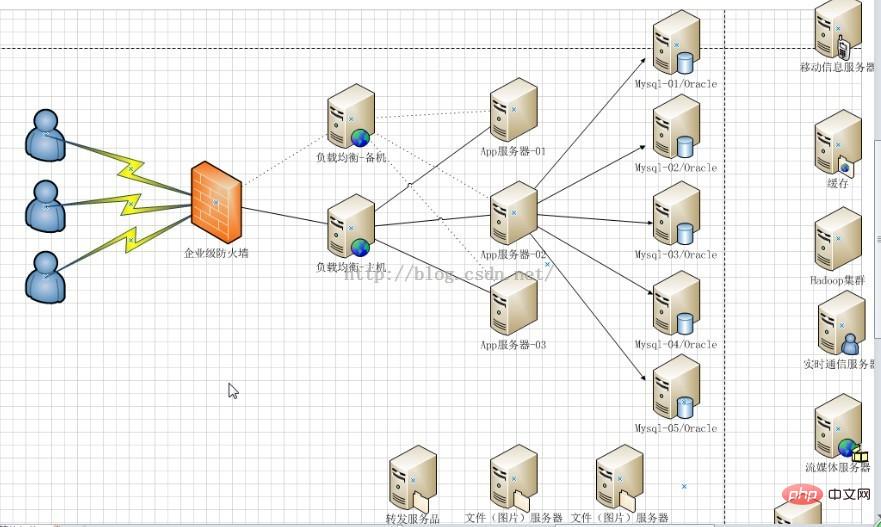

##1. The role of load balancing
1. Forwarding function ##) According to a certain algorithm [weight, polling], client requests are forwarded to different application servers to reduce the pressure on a single server and increase system concurrency.
2. Fault removal
Use heartbeat detection to determine whether the application server can currently work normally. If the server goes down, the request will be automatically sent to other application server.
3. Recovery Addition
If it is detected that the failed application server has resumed work, it will be automatically added to the team that handles user requests.
 2. Nginx implements load balancing
2. Nginx implements load balancing
Also uses two tomcats to simulate two application servers, with port numbers 8080 and 8081
1. Nginx’s load distribution strategy
Nginx’s upstream currently supports the distribution algorithm:
1), Polling - 1:1 processing requests in turn (default)
2), weight - you can you up
2. Configure Nginx's load balancing and distribution strategy
Just add the specified parameters after the application server IP added in the upstream parameter. Implement
upstream tomcatserver1 {
server 192.168.72.49:8080 weight=3;
server 192.168.72.49:8081;
}
server {
listen 80;
server_name 8080.max.com;
#charset koi8-r;
#access_log logs/host.access.log main;
location / {
proxy_pass http://tomcatserver1;
index index.html index.htm;
}
}
The above is the detailed content of How to configure nginx as a load balancer. For more information, please follow other related articles on the PHP Chinese website!
 nginx restart
nginx restart
 Detailed explanation of nginx configuration
Detailed explanation of nginx configuration
 Detailed explanation of nginx configuration
Detailed explanation of nginx configuration
 What are the differences between tomcat and nginx
What are the differences between tomcat and nginx
 what is url
what is url
 mysql transaction isolation level
mysql transaction isolation level
 The difference between win10 home version and professional version
The difference between win10 home version and professional version
 special symbol point
special symbol point
 What is the cmd command to clean up C drive junk?
What is the cmd command to clean up C drive junk?